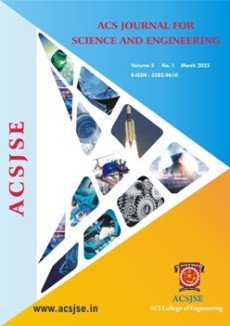Design, Analysis and making of RC Controlled Stealth Aircraft Working Model
DOI:
https://doi.org/10.34293/acsjse.v4i1.106Keywords:
Stealth Aircraft, RC ModelAbstract
The project focused on the design, construction, and testing of a working model of an RC controlled stealth aircraft. A multidisciplinary approach was adopted, incorporating aerodynamics, electronics, materials, and control systems to achieve the desired performance. The aerodynamic design of the model involved careful consideration of the shape, contours, and
surfaces. The goal was to minimize radar reflections and reduce the infrared signature, leading to the incorporation of smooth and streamlined surfaces, blended wing profiles, and carefully shaped edges.RC channel mixing was implemented to coordinate the movements of control surfaces. This allowed for synchronized actions of ailerons, elevators, rudder, and flaps, facilitating precise maneuvering and stability during flight. By combining input signals from multiple control channels, the model's control surfaces operated seamlessly, emulating the behavior of larger stealth aircraft. The construction process focused on assembling a lightweight yet sturdy airframe using appropriate materials. Structural integrity was ensured to withstand the aerodynamic forces encountered during flight. Extensive testing and fine-tuning were conducted to optimize the model's performance, including stability, responsiveness, and stealth characteristics. The completion of the project resulted in a fully functional RC controlled stealth aircraft model.
Downloads
Published
Issue
Section
License
Copyright (c) 2024 A. K. Arun

This work is licensed under a Creative Commons Attribution-ShareAlike 4.0 International License.






